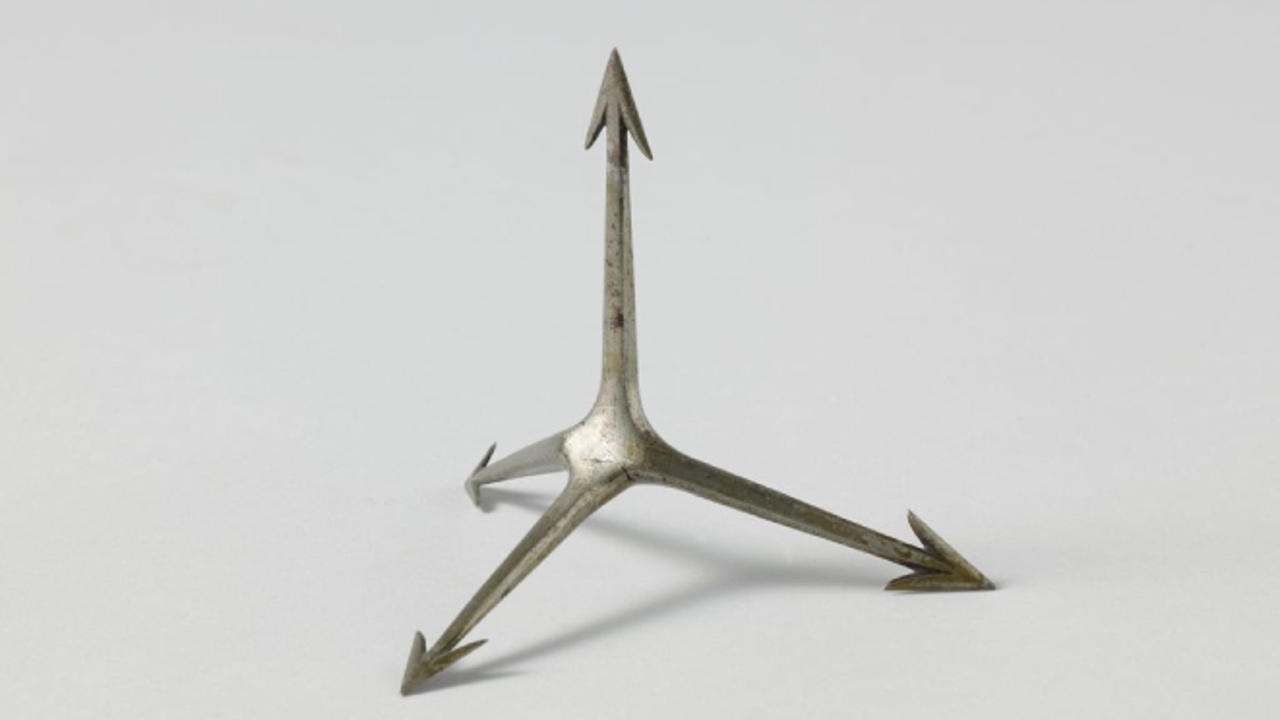Ukraine is using a ancient weapon in a new way to attack the logistics of Russian army on the front. According to Popular Mechanics, echoing various videos published on social networks in Russia and Ukraine, the caltropsalso known as 4 prong trapsare being used together with drones to stop the advance of the Russian trucks.
Originally designed at least 2,300 years To stop the advance of enemy cavalry and infantry, the caltrop is a weapon made up of 4 or more sharp metal spikes arranged in the shape of a tetrahedronso that when one of the spikes falls to the ground always points up.
In Ukraine, 4-prong traps are launched from specialized drones at night, on the path of Russian convoys. When a Russian truck or other wheeled vehicle passes over them, blow out your tires and may become immobilized.
Use by Ukrainians of spikes dropped from drones to damage Russian vehicles and hurt logistics. Judging by the commentary, this tactic is effective and easy to deploy. pic.twitter.com/MvcQ01JNBO
— WarTranslated (Dmitri) (@wartranslated) March 2, 2024
An easy target for a subsequent attack with low-cost kamikaze drones or artillery. Even if they are not destroyed immediately, the loss of tires seriously hampers the movement of Russian personnel and material until recovery or repair work is carried out.
This is how the 🇷🇺 wheeled logistics is stopped. Most of the ammo deliveries are conducted at night when the 🇺🇦 FPV drones are not that efficient. So the remedy looks like that. This is caltrop (AKA caltrap/cheval trap), an area denial weapon. 👀👇https://t.co/lCJ3iNUzCgpic.twitter.com/dq87jmW4jJ
— JR2 (@JanR210) April 15, 2024
'Now the Armed Forces of Ukraine are actively dropping such 'thorns' on the roads used by our troops. According to your plan, after a puncture, the car stalls and is destroyed by artillery fire or kamikaze drones. Yesterday we also passed over such thorns, but we continued moving towards a safe place. To give credit to the 'Tiger', with exactly the same wheel as in the photo, we reached 40 km/h', the military information account milonfolive explains on the Russian social network VK.
Russian sources are saying that Ukraine is dropping caltrops on roads to damage their vehicles' wheels. When the vehicles stop, they are then targeted by artillery or FPVs.https://t.co/CzIsS7jE7cpic.twitter.com/0T1ioUPaRX
— Rob Lee (@RALee85) April 21, 2024
There was already evidence of the use of caltrops in Ukraine to defend fortified positions, but this is the first time it has been used offensively in Russian-occupied territory and its demand is increasing. The media cites the case of a company called Art of Steel whose blacksmiths They created medieval armor and now mass produce 4-pronged traps for use by the Ukrainian Army.
Their traps are made with nails more than 15 centimeters attached to chains, which means that they can be easily removed later. Other variations have been seen, including large traps inside ditches and hidden under a layer of soil.
This ancient weapon has been used since ancient times in many war conflicts. The first evidence of its use dates from the year 331 BC in the Battle of Gaugamela. Here, the Persian king Darius III spread “crow's feet” on the battlefield to help counter the domestic infantry and cavalry of Alexander the Greatas the 1st century Roman historian wrote Quinto Curtius Rufus.

